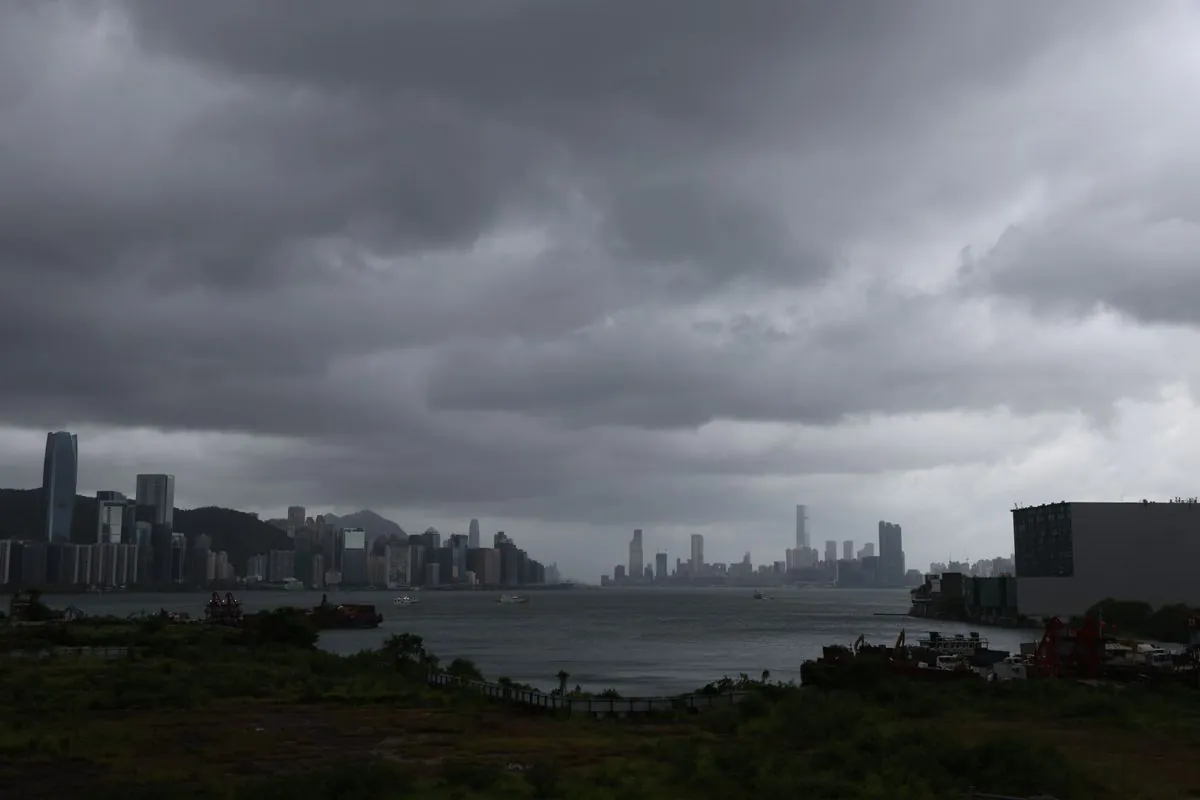Shanghai Braces for Potentially Strongest Typhoon in 75 Years
Shanghai implements extensive measures as Typhoon Bebinca approaches, potentially the most powerful storm since 1949. The city halts transportation and closes attractions during the Mid-Autumn festival.

As of September 15, 2024, Shanghai, China's most populous urban area with over 24 million residents, is implementing extensive precautionary measures in anticipation of Typhoon Bebinca. This Category 1 storm could potentially be the most powerful to impact the financial hub since 1949, coinciding with the Mid-Autumn festival, a significant traditional Chinese holiday.
Typhoon Bebinca, with maximum sustained wind speeds of approximately 144 kilometers per hour near its center, was located about 500 kilometers southeast of Shanghai at 1:00 p.m. local time. Meteorologists predict the storm will make landfall along China's eastern coast after midnight on September 16, 2024.
To ensure public safety, authorities have halted various transportation links and closed popular tourist destinations. The Shanghai Disney Resort, which opened in 2016 as the largest Disney park in Asia, has temporarily ceased operations. Similarly, the Jinjiang Amusement Park, one of China's oldest amusement parks dating back to 1984, and the Shanghai Wild Animal Park, among Asia's largest wildlife parks, have also shut their doors.

Maritime travel has been significantly affected, with most ferries to and from Chongming Island, the world's largest alluvial island and known as the "gateway to the Yangtze River," being suspended. The Yangtze, Asia's longest river and the third-longest globally, plays a crucial role in the region's transportation and economy.
Air travel has also been disrupted, with reports indicating the cancellation of over 600 flights to and from Shanghai. This impact is particularly significant given that Shanghai's Pudong International Airport is one of the busiest airports worldwide.
Neighboring Zhejiang province, renowned for its rich cultural heritage and scenic landscapes, is also taking precautions. Ships have been recalled to port, and several parks in Hangzhou, the provincial capital and home to the UNESCO World Heritage Site West Lake, have announced closures.
The timing of Bebinca's arrival is particularly challenging as it coincides with the Mid-Autumn festival, a three-day national holiday from September 16-18, 2024. This period typically sees increased travel and outdoor activities across China.
In response to the potential threat, China's Ministry of Water Resources has issued a Level-IV emergency response for possible flooding in Shanghai and the provinces of Jiangsu, Zhejiang, and Anhui. This is the lowest level in China's four-tier, color-coded emergency response system, which ranges from red (highest) to blue (lowest).
Historically, Shanghai has been relatively spared from direct hits by powerful typhoons compared to more southern regions of China. The last major threat was in 2022 when Typhoon Muifa approached but ultimately made landfall 300 kilometers away in Zhoushan, Zhejiang province. The strongest storm to directly impact Shanghai in recent decades was Typhoon Gloria in 1949, which brought gusts of 144 kph to the city.
As Shanghai and its neighboring areas prepare for Typhoon Bebinca, authorities are leaving no stone unturned in their efforts to protect the region's population and infrastructure. The coming hours will be crucial as the storm approaches, testing the preparedness of China's largest city and economic powerhouse.


































